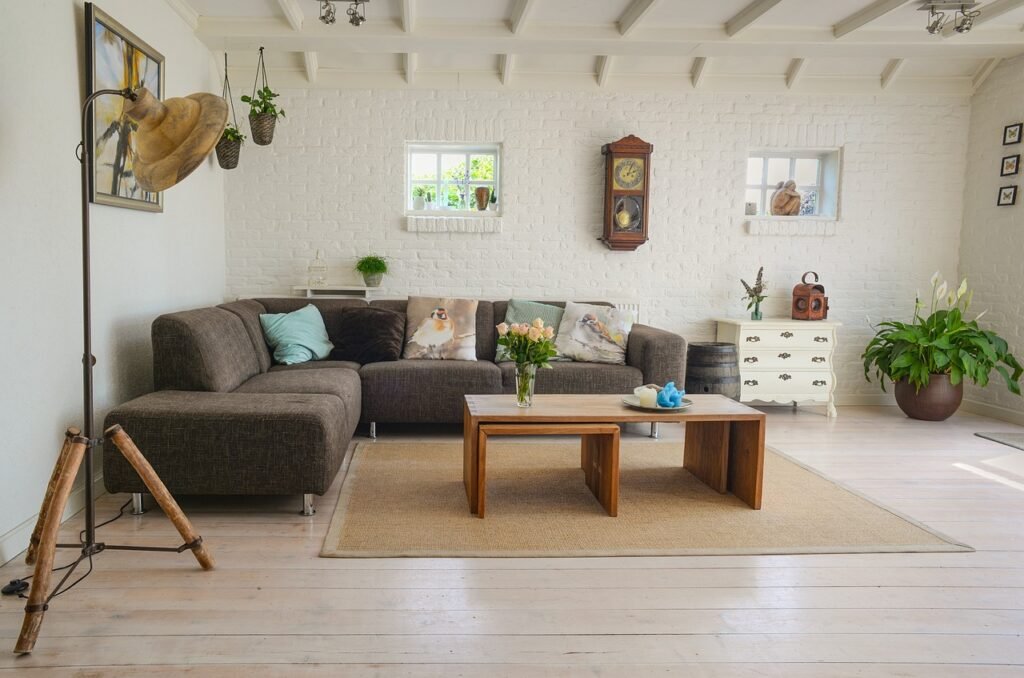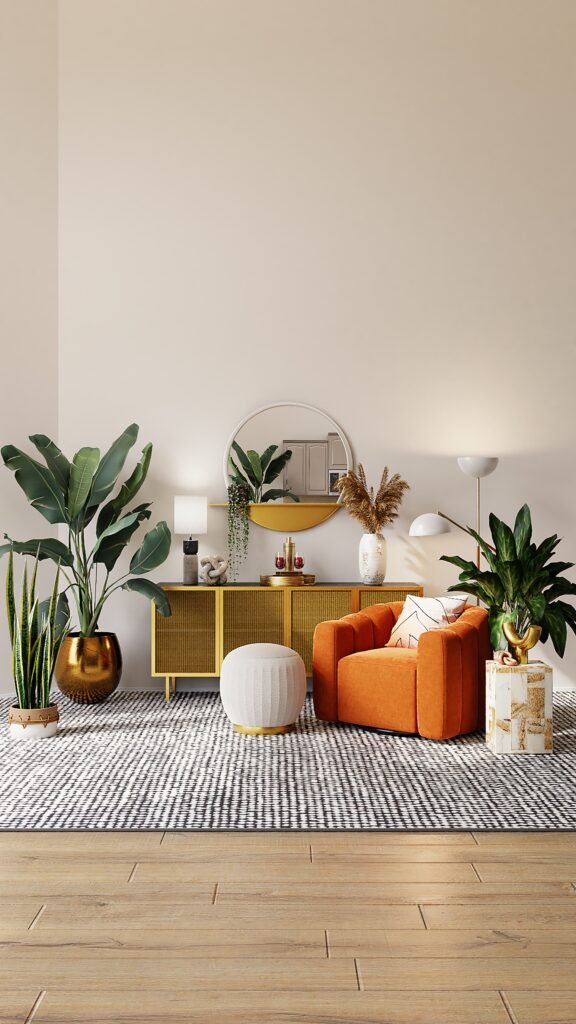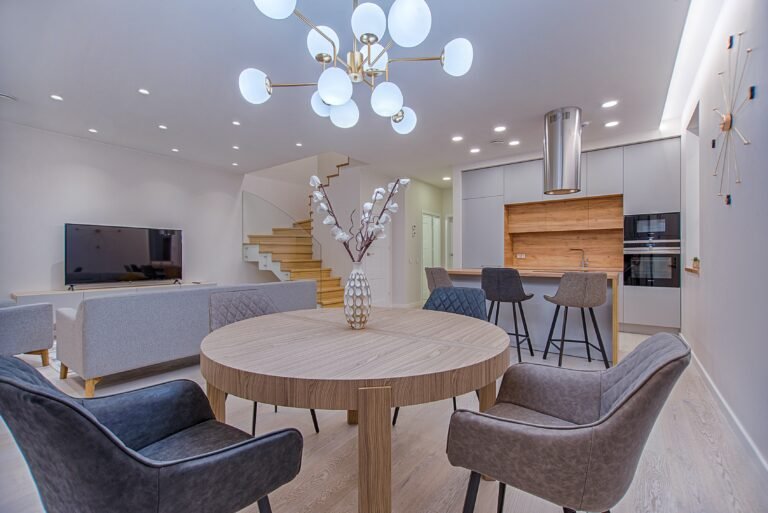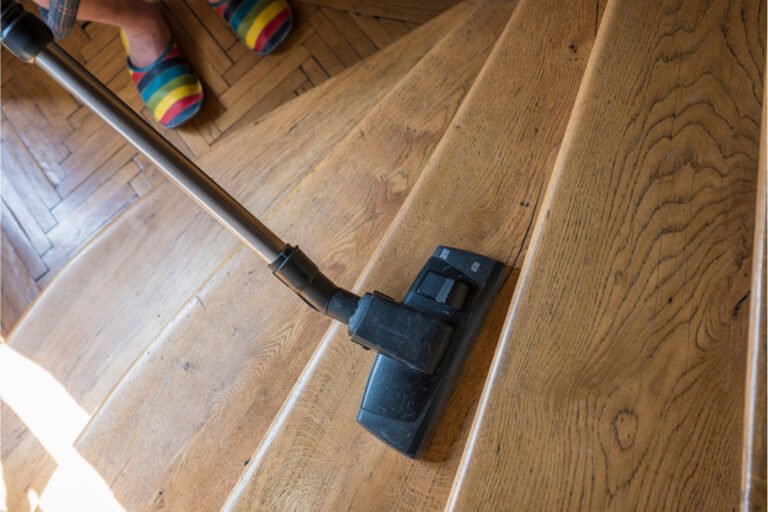How To Decorate Between Christmas And Spring

As the last of the Christmas decorations are slowly coming down, and flowers and warmer weather are just around the corner, now is a great time to have some fun finding creative ways to transition between seasons! Whether you’re looking for decorating ideas that will bring an airy spring feel into your home or want simple touches that allow you to keep celebrating until Easter arrives, this post has plenty of tips on how to decorate between Christmas and spring.
You’ll love how simple yet satisfying it can be to transition from Christmas decor into fresh spring colors! Whether you’re looking for a minor tweak or a major makeover, several ideas will help you easily go from cozy winter vibes to an inspired space that celebrates the beginning of a new life. Read on and get ready for a seasonally balanced living space!
Taking Down Christmas Decorations

Taking down Christmas decorations marks the first step towards transitioning your home décor from winter to spring. It’s always a bit sad to say goodbye to the holiday season, but it’s also exciting to prepare for the freshness of spring!
Start by carefully removing your Christmas tree ornaments and wrapping each individually in tissue paper or bubble wrap to prevent any breakages. Always work from top to bottom to avoid any mishaps.
When you take down lights, checking for any that may have stopped working is a good idea. This way, you can replace them before you store them away for the next year. To prevent twinkle lights from tangling, wind them around a piece of cardboard or a special light storage reel.
🎄 Ideas for Storing Christmas Decorations
A good storage system will keep your Christmas decorations safe, organized, and easy to find for the next holiday season.
Store your Christmas ornaments in sturdy boxes with compartments to avoid any damage. You can also use clear plastic bins to see what’s inside easily. Label each box according to its contents to make decorating easier next year.
For string lights, after wrapping them around cardboard or a reel, place them in a plastic bag to avoid dust build-up. Store your Christmas wreath in a closet or under a bed, but ensure it’s protected in a plastic cover to keep it clean and dust-free.
Taking down and storing your winter decorations carefully will ensure they’re in perfect condition for the next holiday season. Now, you’re ready to start thinking about spring decorations!
Assessing and Cleaning

Before you begin to decorate for the upcoming spring season, it’s crucial to clean your space thoroughly. Why? Cleaning your home will eliminate any dust or dirt accumulated during the winter months, offering you a fresh canvas to work with. Moreover, clean space can enhance the appearance of your new decorations, making colors seem brighter and more vibrant. It also helps reduce clutter, making it easier to visualize and plan your decoration layout.
⛄ Assessing Your Space and Planning for New Decor
After cleaning, take a moment to assess the state of your space. This involves looking at your room from a new perspective – consider the available space, the color of the walls, and how the natural light comes in. You should take a few photos to help with this. Your goal is to identify where new decorative pieces could go and how they might affect the room’s overall ambiance.
Next, sketch out a rough plan for your decorations. This doesn’t have to be perfect – it’s just a tool to help you visualize your ideas. Make a list of what you want to include in your spring decor. This could be anything from new throw pillows to floral arrangements to spring-themed wall art.
Lastly, remember to consider balance and harmony when planning your decor. The best decor enhances a room without overwhelming it. So ensure the size, color, and style of your spring decorations complement your existing decor rather than clash with it.
The process of assessing your space and planning your decor is a key step in the transition from Christmas to spring. It allows you to make mindful and strategic decisions to bring out the best in your space.
Choosing a Transitional Theme

Choosing a transitional theme that blends winter’s coolness with spring’s warmth can be a fun and exciting process! Here are some themes that might inspire you:
- Winter Garden: This theme pairs the crispness of winter with the first signs of life in a garden. Think of bare trees contrasted with budding flowers.
- Sunshine and Snowflakes: This theme combines the bright cheeriness of sunny spring days and the delicate beauty of winter snowflakes. It’s a great way to transition from winter to spring slowly.
- Cozy Pastels: Pastel colors are traditionally associated with spring, but they can also bring a soft, cozy feel that is perfect for the tail end of winter. Combine pastel colors with plush fabrics to create this theme.
- Rustic Renewal: This theme combines winter’s rustic, cozy vibes with the sense of renewal that spring brings. Incorporate elements like reclaimed wood and fresh greenery to achieve this look.
When it comes to choosing colors, patterns, and materials that reflect both the coziness of winter and the freshness of spring, here are a few tips:
- Colors: Balance is key. Mix cool winter colors like blues and grays with warmer spring hues like pinks, yellows, and greens.
- Patterns: Geometric patterns can evoke a sense of winter, especially when done in cool colors. As you transition into spring, floral patterns can bring a sense of freshness and life.
- Materials: To capture the coziness of winter, use plush materials like velvet or faux fur. Introduce lighter fabrics, such as linen or cotton, as you transition into spring.
Remember, there’s no right or wrong way to decorate your home. Most importantly, your space makes you feel happy and comfortable.
Incorporating Natural Elements

Incorporating natural elements like flowers, plants, and branches into your home decor is a fantastic way to bring in a touch of the outdoors and create a soothing, calming atmosphere. Here’s how you can do it:
🥀 Flowers: Fresh flowers add color and fragrance and introduce a sense of liveliness to your space. You can opt for seasonal flowers in a vase or even create a DIY floral centerpiece. Remember to change the water regularly to keep them fresh longer.
🥀 Plants: Indoor plants like succulents, ferns, or snake plants are beautiful and help improve air quality. You can place them in stylish planters and arrange them on shelves, hang them from the ceiling, or have them in the corners of your living room.
🥀 Branches: Bare or leafy branches can be used as statement pieces. You can paint them in pastel spring colors, place them in tall vases, or hang them up as wall decorations.
Incorporating natural elements in your home decor offers various benefits:
✅Improving Air Quality: Many indoor plants can purify the air by removing toxins while releasing oxygen.
✅Creating a Calming Atmosphere: Elements like plants and flowers can make a room feel more peaceful and relaxed.
✅Adding Textural Variety: Natural elements introduce different textures that can enhance your space’s visual interest.
✅Promoting Connection with Nature: Having natural elements in your home helps establish an ongoing connection with nature, which can promote wellbeing.
Layering Textures

Layering textures in home decor combines different materials and finishes to add depth and interest to a space. It’s all about playing with contrasting and complementary tactile experiences to create a balanced, inviting atmosphere. This technique is particularly effective in transitional decor as it allows you to blend the coziness of winter textures with the light, airy feel of spring materials.
Examples of textures that work well in transitional decor might include the soft, plush touch of a faux fur rug (which evokes the warmth of winter) paired with the smooth, crisp feeling of a cotton throw pillow in a light pastel color (bringing a hint of spring). A knitted woolen blanket could be contrasted with the rough, rustic appeal of a reclaimed wood coffee table. Or, you might pair the shiny, sleek surface of a metal vase with a terracotta pot’s matte, earthy texture.
When it comes to effectively layering these different textures, there are a few key tips to remember:
✅ Balance: Ensure there’s a balance between the different textures. Too many rough or smooth surfaces can make a room feel overwhelming or bland respectively.
✅ Variety: Aim for a variety of textures. This keeps the eye interested and prevents the space from feeling too uniform or predictable.
✅ Distribution: Distribute textures evenly throughout the room. You can achieve a coherent and harmonious look by spreading out contrasting textures.
✅ Experimentation: Feel free to experiment. Mix and match different textures until you find combinations that make you feel comfortable and happy.
Adding Pops of Color
The importance of color in transitioning your space from winter to spring cannot be overstated. Bright, fresh colors can revitalize your home, making it feel more spring-like while also serving as a counterpoint to the remaining winter elements. Color has the power to influence mood, create atmosphere, and define a space. Spring colors, in particular, can evoke feelings of joy, rejuvenation, and optimism.
Here are some suggestions for spring colors that can refresh the look of your space without clashing with the winter elements:
- Soft Pastels: Colors like lavender, mint green, or blush pink can introduce a gentle hint of spring without being overwhelmingly bright. These colors are subtle enough to complement the cooler winter palette.
- Refreshing Aqua: This cool shade pairs well with grays and blues commonly found in winter decor yet brings a touch of spring’s freshness.
- Sunny Yellow: A dash of this warm, cheerful color can brighten your space, making it feel more inviting. Use sparingly to avoid overpowering the room.
- Earthy Green: This soothing color can help maintain a connection with nature, seamlessly merging the inside and outdoor worlds across seasons.
Remember, balance is key when adding pops of color. You want to create a harmonious blend that signifies the transition between seasons, not a stark contrast. The goal is to gradually welcome spring while appreciating winter’s tail end.
Updating Furniture and Accessories

Updating your furniture and accessories is a cost-effective way to freshen up your decor and transition between seasons. Here are a few simple, budget-friendly ideas:
🏚 Reupholster Furniture: You can breathe new life into old furniture by reupholstering it with fresh, seasonal fabric. This can be as simple as adding a new slipcover to a couch or reupholstering the seat of a dining chair.
🏚 Swap Out Throw Pillows: Throw pillows are a great way to introduce new colors, textures, and patterns. In the transition from winter to spring, consider swapping out heavier materials like velvet or faux fur for lighter fabrics like cotton or linen in vibrant spring colors.
🏚 Update Wall Art: Changing the art on your walls can drastically alter the feel of a room. Consider replacing dark, wintery scenes with light, bright, and cheerful artwork reflecting spring’s spirit.
🏚 Restyle Shelves: Shelves offer a great opportunity to display seasonal decor. Transition your display from Christmas to spring by swapping out holiday items for vases of fresh flowers, colorful books, or spring-themed knick-knacks.
🏚 DIY Projects: DIY projects not only save money but they also allow you to add a personal touch to your decor. Paint an old piece of furniture a new color, create your own wall art, or make your throw pillows. The possibilities are endless, and you get the satisfaction of creating something beautiful with your hands.
Final Touches
The final touches in your decor can make a significant difference in tying the whole look together. Here are some suggestions:
🎋 Use Foliage: As spring approaches, trees start to blossom, and plants begin to grow. Incorporate fresh green foliage or blooming branches into your decor to bring the essence of spring into your home. Place them in vases or pots which complement your color scheme.
🎋 Candles and Fragrances: Use candles and home fragrances with fresh, floral, or earthy scents to create a spring-like atmosphere. Choose candles in colors that match your decor for an added visual touch.
🎋 Lighting: As the days get longer, make the most of the natural light. Consider lighter, sheer curtains that allow sunlight to filter into the room and create a bright, airy feel.
🎋 Decorative Accents: Add small decorative items like a decorative bowl filled with pastel-colored Easter eggs, a spring-themed table runner, or a floral wreath on the door.
Keeping Decor Fresh and Exciting

To keep the decor feeling fresh and exciting throughout the transition period, consider these tips:
🌲 Rotate Decor Items: Don’t display all your spring decor at once. Instead, keep some items in storage and rotate them every few weeks. This constant change keeps the decor feeling fresh and gives each item a chance to shine.
🌲 Add Seasonal Flowers: Regularly update your flower arrangement with what’s currently blooming. Not only does this keep your decor in sync with the season, but it also provides a regular change and an opportunity to experiment with different looks.
🌲 DIY Projects: Take on small DIY decor projects. These can be as simple as painting a picture frame or as involved as redecorating an entire wall. This keeps the decor dynamic and allows you to put your personal touch on the space.
🌲 Keep It Clean: A clean, clutter-free space always feels fresh. Make a habit of regular cleaning and decluttering. This also allows you to reassess your decor and make any necessary changes.
Frequently Asked Questions
Q: What are some easy ways to transition my Christmas decorations to early spring?
Transitioning from Christmas to early spring is easier. Simply start by removing explicit Christmas decorations such as Santa figures and reindeer. You can leave up winter-themed items like snowflakes and pinecones, which are still relevant in the early spring period. Gradually introduce spring elements such as fresh flowers and lighter colors to your decor over time.
Q: How can I incorporate pinecones into my early spring decor?
Pinecones are versatile decor items bridging the holiday and early spring seasons. You can place them in a centerpiece or scatter them on your mantel, perhaps intertwined with a faux greenery garland. As spring approaches, consider painting the pinecones in pastel colors or dusting them with a bit of glitter for a fresh, festive touch.
Q: Can pom poms be used in transitioning from holiday decor to spring?
Absolutely! Pom poms are a fun and whimsical decor element that can transition well from winter to spring. Swap out traditional holiday colors for brighter, spring-like colors. Pom poms can be used in various ways, from a playful garland in your living room to a unique centerpiece on your dining table.
Q: What should I do with my fall decor during the transition from Christmas to spring?
While fall decor items like pumpkins and autumn leaves might not fit in with the early spring aesthetic, there could be elements that you can repurpose. For instance, items in neutral colors or natural materials can often blend well with holiday and spring decor. Get creative with repurposing these items — perhaps that fall centerpiece could be spruced up with some new spring flowers.
Q: How can I use winter greenery in my early spring decor?
Winter greenery can be an excellent bridge between Christmas and spring decor. Keep your evergreen wreaths and garlands up after the holidays, but consider updating them as spring approaches. Add some fresh spring flowers, or switch out your holiday bow for a lighter, brighter color ribbon. This can help to transition your decor without a stark contrast between seasons.
Conclusion
From wreaths on your front door to a cheery centerpiece, there are plenty of ways to bridge the gap between Christmas and spring when decorating. Whether you prefer subtle changes or bold, colorful accents, you’re sure to find something that reflects the season in your home. Tip: don’t forget the windows – they provide an easy way to add a bright touch with floral curtains or lightweight drapes. Take some inspiration from these ideas and find what works for you so this transition period between winter and spring can be enjoyed throughout your home. What have you done to transition from Christmas to spring? Leave us a comment with any unique ideas or tips; we’d love to hear them!






